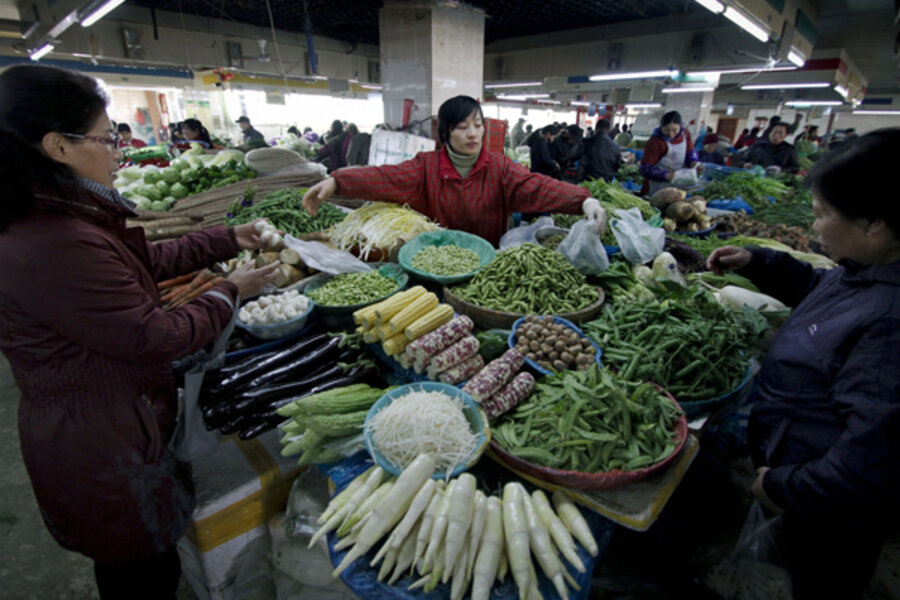China's economic recovery picks up pace, but for how long?
Loading...
| Beijing
New figures suggest that China’s economic recovery is speeding up, with industrial production and retail sales rising faster than expected in November.
The official statistics, released Sunday, signal that the world’s second-largest economy has avoided a hard landing for the foreseeable future, local and foreign analysts agree. Still, China’s long-term economic growth is not expected to regain the breakneck speeds of an earlier era.
A 10.1 percent year-on-year jump in industrial production “is a clear signal that the economy has changed direction” after seven straight quarters of shrinking GDP growth, says Andrew Batson, an economic analyst at the Dragonomics consultancy in Beijing.
The weekend’s good news, however, was dented somewhat by weak trade figures for November, released on Monday; exports grew by only 2.9 percent over 2011 levels, and imports were flat.
This was hardly surprising, however, in view of the fact that two of China’s largest trade partners, the European Union and Japan, are in recession; shrinking trade with those two markets offset a modest increase in trade with the US, where economic recovery remains hesitant.
“The trade figures reflect the serious impact of the global recession on the Chinese economy,” says Xiang Songzuo, senior economist at Agricultural Bank.
With the economy showing signs of bottoming out, analysts are predicting GDP growth rates next year of around 8 percent, up from this year’s projected 7.5 percent rate – the weakest performance since 1999.
“China’s economy is now in a sweet spot and can stay in the sweet spot through the first half of 2013,” wrote Lu Ting, the Bank of America’s China economist, in a research note Sunday.
Double-digit growth rates, however, are a thing of the past, says Mr. Batson. In the long term, as the Chinese economy matures, its growth is bound to steady. “We are seeing a bit of bounce now because the cycle is turning,” he believes.
That seems largely driven by the construction sector, which has been picking up in recent months and thus stimulating the production of inputs such as steel and cement. This follows a relaxation of earlier government dampers that were designed to cool the housing market and prevent a bubble.
This year, the government has introduced policies to encourage first-time homebuyers, and reduced interest rates; house prices have climbed steadily for the past six months after having plunged more than 15 percent.
Behind the encouraging figures, including a 2 percent inflation rate – half the government’s target ceiling – lie some more worrying indications, however.
Factory door prices fell in November by 2.2 percent for the ninth straight month, and manufacturers’ warehouses are full, says Ye Tan, an independent economic analyst. “The signs of overcapacity are clear,” she warns. “Unless the Chinese domestic market can digest these surplus stocks a lot of Chinese companies are going to be facing a new problem.”
The Chinese authorities have pinned their hopes for future economic growth on domestic consumption, which this weekend’s figures suggest is holding up well. As the new leaders of the ruling Communist Party look into the new year, they can be moderately encouraged, according to HSBC’s two top China analysts, Ma Xiaoping and Qu Hongbin.
“Sluggish external demand remains the biggest drag on China’s growth recovery,” they said in a note Monday. “Nonetheless, a steady domestic demand recovery, underpinned by investment and consumption, should sustain China’s GDP gradual rebound to around 8 percent” in 2013.








